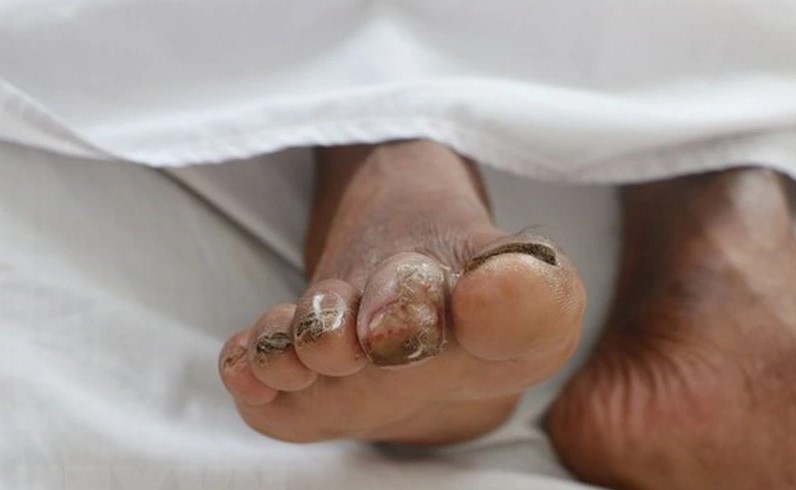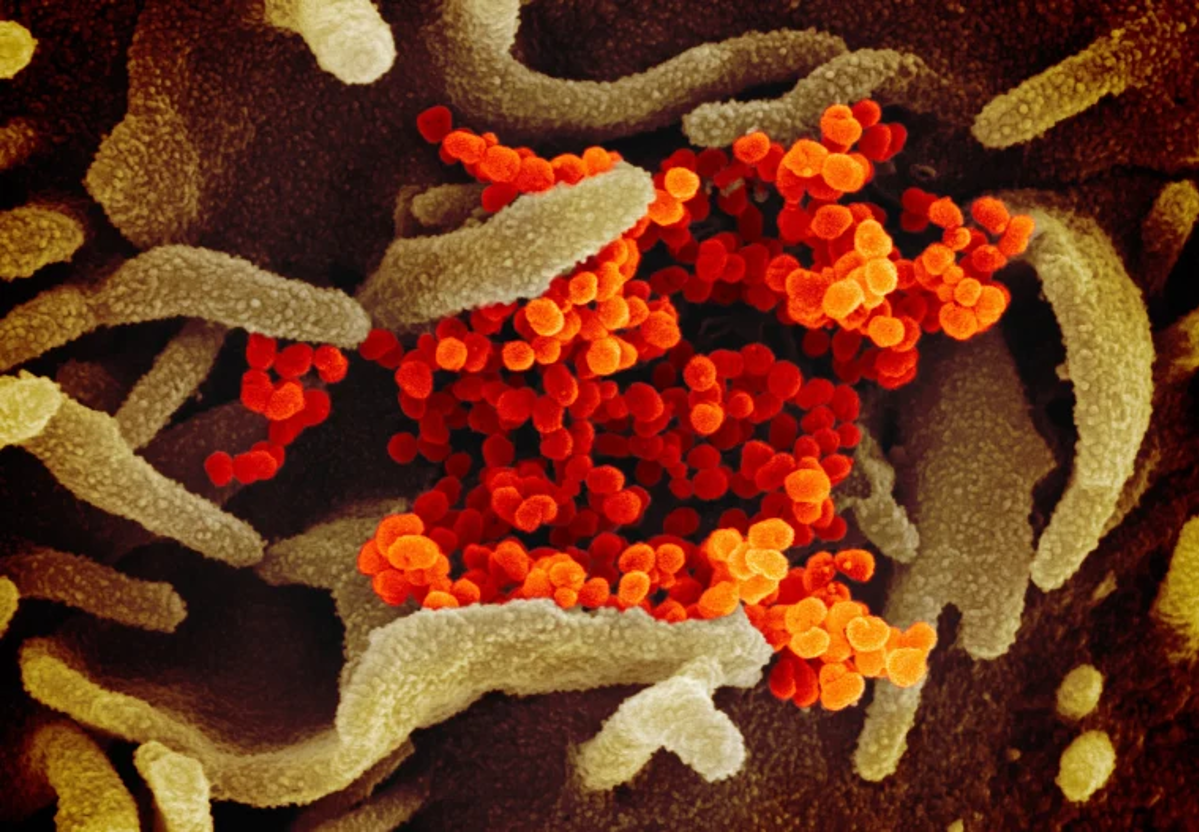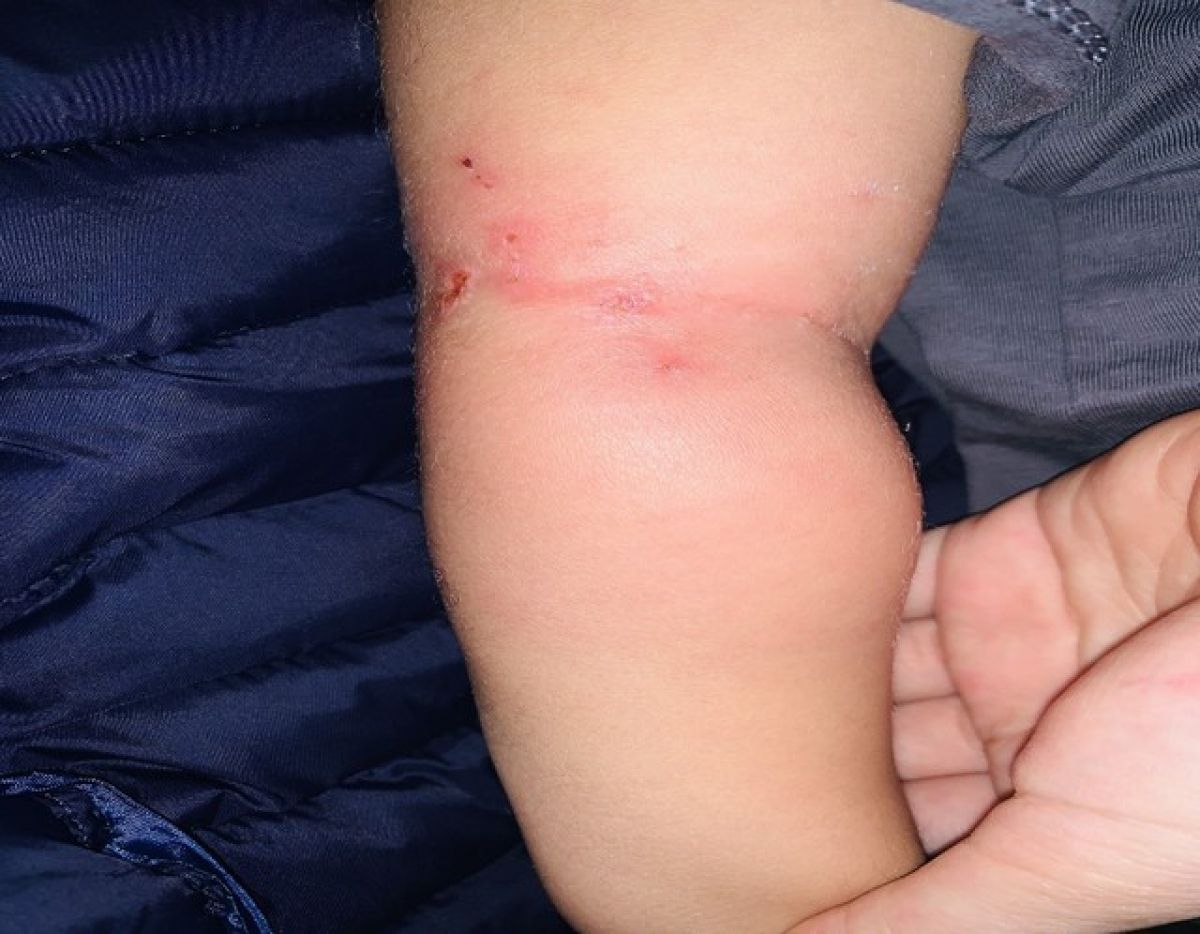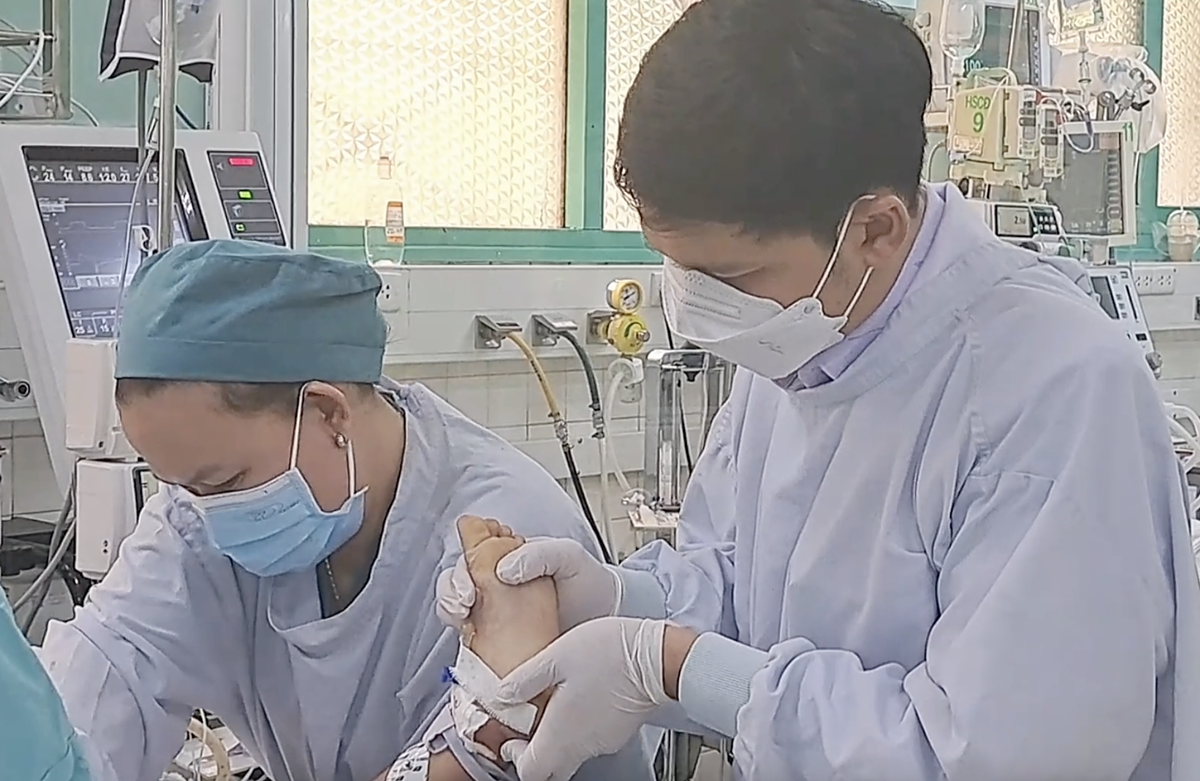Beware of the "cannibal" bacteria that causes Whitmore's disease
- Whitmore disease is a dangerous acute infectious disease caused by a gram-negative bacterium called Burkholderia Pseudomallei that affects both humans and animals.

BSCKI. Dong Minh Hung, Center for Disease Control (CDC) of Dong Nai province, said that the common way of entering the human body of Whitmore bacteria is through scratched skin when exposed to contaminated water sources, containing chemicals, waste, especially in lakes, swamps, fields, sewers... Or when inhaling dust particles or tiny water drops in the air containing bacteria, especially in the rainy season, it is dangerous. The chance of being infected with Whitmore bacteria is very high.
Whitmore disease often occurs in people who are regularly exposed to mud and water such as farmers, construction workers, gardeners, sewer dredgers... People with one or more underlying diseases such as diabetes, addiction alcohol, lung disease, chronic kidney disease, especially diabetes, if blood sugar is not well controlled, there is a risk of infection and can easily cause dangerous and unpredictable complications.
Stages and signs of the disease
According to Dr. Hung, depending on the stage of the disease, it sometimes takes 2-4 weeks for symptoms to appear after exposure to bacteria. In some individual cases, symptoms can occur within a few hours or even years after infection. There are also a small number of people with the disease who have no symptoms.
Whitmore disease usually goes through 4 stages with the following typical signs:
- Local infection: During this stage, the patient's skin will have red, pus-filled bumps that cause skin ulcers, pain and are accompanied by a number of symptoms such as: Fever, weight loss, abdominal pain or pain. chest pain, muscle or joint pain, headaches, seizures, and ulcers also appear in many organs in the body such as the liver, lungs, spleen and prostate. Infections can even occur in joints, bones, lymph nodes or the brain.
- Lung infection: Usually when Whitmore bacteria enter the lungs, patients notice clear symptoms and go to the doctor. These symptoms are usually: Cough with or without phlegm, chest pain when breathing, high fever, headache and muscle aches, weight loss...
- Blood infection: If not treated quickly and properly, the patient's lung infection will progress to blood infection, also known as septic shock. This is a serious complication of Whitmore disease. When the disease is at this stage, the risk of death is very high. Septic shock often progresses quickly with symptoms such as: High fever, accompanied by shivering and sweating, headache, sore throat, difficulty breathing, respiratory failure, upper abdominal pain, diarrhea, joint and muscle pain, disorientation. Pus-filled ulcers on the skin, inside the liver, spleen, muscles, or prostate.
- Whole body infection: When the disease reaches the final stage, a whole body infection will occur, causing the following symptoms: Pain or swelling in the parotid gland; muscle and joint pain; liver, lungs, spleen, lymph nodes, prostate... are damaged; high fever, epilepsy, convulsions; Ulcers or abscesses appear on the skin and throughout the body's organs. These spots start out as hard, gray or white spots, then become tender and inflamed, looking like wounds caused by flesh-eating bacteria.
Whitmore disease can cause many dangerous complications such as: brain stem encephalitis, often with cranial nerve paralysis (especially cranial nerve VII), peripheral motor weakness, and sometimes flaccid paralysis. For people suffering from certain chronic diseases such as diabetes, kidney failure, liver failure, thalassemia... there is a high risk of blood infection. In addition, people over 40 years old, people with chronic lung infections (such as cystic fibrosis, chronic obstructive pulmonary disease (COPD), bronchiectasis), cancer or another condition that affects immune system function Fluid also increases the risk of sepsis.
Proactively implement disease prevention measures
Recently, Whitmore disease is at risk of re-erupting in Vietnam. Many localities have recorded a sudden increase in the number of Whitmore disease cases, including many deaths. Besides, there are many animals that are susceptible to Whitmore's disease such as: Sheep, goats, pigs, horses, cats, dogs... However, this disease is very rarely transmitted from person to person, or from animal to person. through the air and is mainly transmitted through broken skin.
"Up to now, there is no vaccine to prevent Whitmore disease, so if not diagnosed and treated promptly, the risk of death is very high, especially for people with underlying diseases such as diabetes. or chronic liver disease. This is a dangerous infectious disease that requires long-term treatment, on average 8-12 weeks, in some cases it can last up to 6 months or 1 year depending on the severity. mild disease. This not only affects the patient's quality of life, but the long-term treatment costs also greatly affect the family's economy" - Dr. Hung shared.
To proactively prevent Whitmore disease effectively, Dr. Dong Minh Hung recommends that people should not be subjective with this dangerous disease. To better protect the health of themselves and their loved ones, they should pay attention to the following issues. :
- Limit contact with soil or muddy water, especially in heavily polluted places;
- Use shoes, slippers and gloves for people who often work outdoors, in contact with dirty soil and water, especially for people at high risk;
- When there are open wounds, ulcers or burns, avoid contact with potentially contaminated soil or water. If contact is required, use a waterproof bandage and should be washed to ensure hygiene;
- People with chronic diseases such as diabetes and immunodeficiency need to be cared for and protected to prevent infections;
- When you suspect infection, you need to go to a medical facility for advice, examination, testing to determine B. pseudomallei infection and timely treatment.
* SOURCE: https://vtv.vn/suc-khoe/canh-giac-voi-vi-khuan-an-thit-nguoi-gay-benh-whitmore-20231023184712089.htm









 Facebook
Facebook
 Tweet
Tweet
 Zalo
Zalo







 News
News

















 Sign in with Facebook
Sign in with Facebook
 Sign in with Google
Sign in with Google